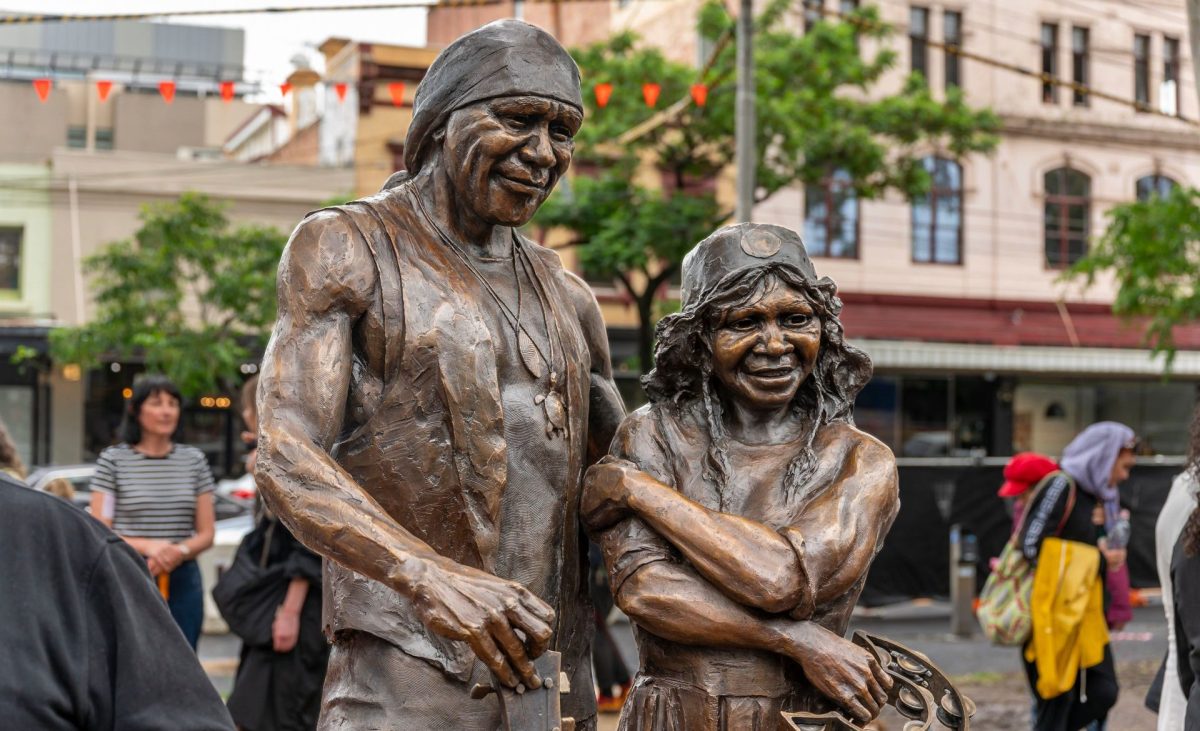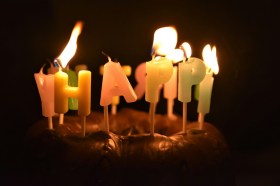Aboriginal and Torres Strait Islanders are advised that this article contains the names of people who have died.
Uncle Archie Roach AC AM (Gunditjmara [Kirrae Whurrong/Djab Wurrung]/Bundjalung) and Aunty Ruby Hunter (Ngarrindjeri/Kokatha/Pitjantjatjara) were revered musicians, storytellers and survivors of the Stolen Generations – Aboriginal and Torres Strait Islander children who were forcibly removed from their families by successive Australian governments to live with white families or in children’s homes.
Uncle Archie and Aunty Ruby’s shared experiences, conveyed through moving and memorable songs and music, played a key role in articulating the pain of the Stolen Generations and communicating that trauma to non-Indigenous Australians and the world.
They also sang about love, family and community, while the Archie Roach Foundation has had a significant impact on the lives of countless First Peoples artists and young people since it was established in 2014.
On Saturday (30 November), bronze statues of the pair – sculpted by Sydney-born, Canberra-raised and Melbourne-based artist and teacher Darien Pullen, with the creative process informed by the Archie Roach Foundation and family members – were unveiled at a permanent memorial in the Melbourne suburb of Fitzroy’s Atherton Gardens, where Roach and Hunter once lived.
Pullen’s previous commissions include statues of Wiradjuri men Yarri and Jacky Jacky, who helped save one-third of Gundagai town’s residents in the great flood of 1852, and a statue of the late music impresario Michael Gudinski at Melbourne’s Rod Laver Arena.
The new statues – commissioned by Yarra City Council in partnership with the Wurundjeri Woi-wurrung Cultural Heritage Aboriginal Corporation and funded by the Victorian Government through the Creative Industries portfolio – honour Uncle Archie and Auntie Ruby’s impact on Australian music, their contribution to Indigenous rights, and the mark they made on the country’s broader political, social and cultural landscape and the lives of many people.
A spokesperson for the Wurundjeri Woi-wurrung Cultural Heritage Aboriginal Corporation said: “Wurundjeri Corporation is incredibly proud to have been involved in the development and installation of this beautiful memorial to two legendary First Nations Music Icons and advocates.
“It continues and builds upon the legacy of significance this area holds to not just Wurundjeri people but to many different mobs, including Uncle Archie Roach and Aunty Ruby Hunter, who are honoured here, that found family and connection to community in these streets,” the spokesperson added.
Speaking with ArtsHub, sculptor Darien Pullen says one of the first things he tried to do with the statues of Uncle Archie and Aunty Ruby was to capture a sense of their character and personalities.
“So what I did with Archie and Ruby, first of all, was to work on their stance so that they felt affectionate. So him, obviously, with his arm around her, but her just subtly leaning in towards him, which is more visible from Gertrude Street, from behind. You can see the weight on the right leg leaning in towards him, and not in a too overt gesture but just enough so that it looks affectionate. And people responded to that. People thought they looked very much a couple,” he says.
Honouring Fitzroy’s legacy
Fitzroy is an area of special significance to First Peoples, even after colonisation. After the closure of Coranderrk Aboriginal Reserve outside Healesville in 1924 (the story of which has been dramatised first by La Mama Theatre and subsequently by Belvoir), the first Aboriginal family, the Booths, moved into the suburb in 1928. By the mid-1930s, some 20 to 30 Aboriginal families were living in Fitzroy.
Fitzroy consequently became the historical centre of political activism and resistance for Aboriginal people in Victoria, the birthplace for many Aboriginal organisations, and a place where many Stolen Generation survivors found family for the first time.
Fitzroy’s Aboriginal history was dramatised by ILBIJERRI in 2006, in the promenade theatre production The Dirty Mile. More recently, in 2018, Atherton Gardens became the home of Remember Me, a Stolen Generations marker by Kamilaroi artist Reko Rennie.
Read: Exhibition review: REKOSPECTIVE: The Art of Reko Rennie, The Ian Potter Centre: NGV Australia
Uncle Archie first reconnected with his siblings (including his only surviving sister, Myrtle) in Fitzroy, and also worked at the George Wright Hostel on George Street. He and Aunty Ruby also lived in Atherton Gardens’ high rise flats with their two sons Amos and Eban for some time.
The park at Atherton Gardens Estate was chosen as an appropriate site for the statues by Uncle Archie and Aunty Ruby’s families.
Aunty Myrtle Roach said Atherton Gardens will always be a special place for her family.
“Fond and treasured memories of a bygone era for the ole parkies like myself. It’s only fitting my brother’s statue and dear Ruby find its permanent place there for all my people and the community to share. We as a family feel both a sense of sadness and excitement as we celebrate two legends and so much-loved members of the Roach and Hunter family,” she said in a statement.
Uncle Jeffrey Hunter said he was delighted to see Uncle Archie and Aunty Ruby be permanently recognised: “I’m very proud of Ruby and our brother-in-law Archie for their beautiful music and sounds over the years.”
The statues, which are easily accessible from Fitzroy’s Gertrude Street, are set in a newly landscaped space designed by Melbourne-based architect Jefa Greenaway and landscape architect Paul Herzich. A path leading to the site is etched with the footprints of Uncle Archie and Aunty Ruby’s totem animals, including the pelican, black swan, wedge-tailed eagle and red-bellied black snake.
A bronze pelican is perched at Aunty Ruby’s feet, while a wedge-tailed eagle adorns the back of Uncle Archie’s waistcoat. He leans on an acoustic guitar adorned with the colours of the Aboriginal flag while she holds a tambourine in one hand.
The inclusion of totemic elements into the sculptural design was part of the commissioning process from the very beginning, Pullen says: “The original competition for a sculptor stated that the selected sculptor had to work closely with the family. And right from the start, once I got the job, they said, ‘We have to include the totems,’… so they were really important.”
Overall, the process of sculpting, consulting with the families, and casting the statues took two years from start to finish, Pullen estimates. And within days of being unveiled, the new artworks have already been claimed by members of the local community, who have tucked sprays of gum leaves behind Aunty Ruby’s left ear and into her tambourine, further wedding the sculptures with the landscape where she and Uncle Archie once lived and made music together.
“I love that when that happens, it’s a sign of affection towards the sculpture. I mean, I’ve got these clay sculptures in my studio and I’m working on them, and then once they’re once they’re cast in bronze and they’re installed, they’re out of my hands, they’re the property of somebody else. And it’s nice when you can see people connecting with them like that,” Pullen tells ArtsHub.
“Making art is a solitary activity, and you don’t really get those sorts of responses until it’s out of your hands. When you’re making something in the studio, you wonder how it’s going to be received, and often, it’s received in a completely different way to what you expect. But I’ve been overwhelmed by the number of wonderful comments that I’ve had since the unveiling [on Saturday]. It’s been really nice.”
Celebrating Archie and Ruby
Uncle Archie was posthumously appointed a companion of the Order of Australia (AC) for his services to the performing arts, to Indigenous rights and for supporting First Peoples artists after his death in 2022. His song ‘Took the Children Away’ became an anthem for the Stolen Generations and was added to the National Film and Sound Archive’s registry of culturally significant recordings in 2013.
“I think it’s become, for me anyway, a significant song; it has a lot to do with what happened to me and also a lot of other people. It’s become a healing song for me. A lot of Aboriginal history and culture is all oral; it’s stories handed down from generation to generation, so this is about a story that shouldn’t be forgotten in this country. It doesn’t just belong to Aboriginal people; it belongs to the rest of the Australia too,” Uncle Archie told this writer in 2013.
Aunty Ruby’s 1994 album, Thoughts Within, was the first solo album to be released by a First Peoples female artist and earned an ARIA Award nomination. Ten years after her death in 2010, she was posthumously inducted into the National Indigenous Music Awards Hall of Fame.
Victoria’s Minister for Treaty and First Peoples, Natalie Hutchins, said of the new statues: “Archie and Ruby were legendary musicians and leaders in the Aboriginal community and this stunning public artwork is a wonderful tribute to their achievements.”
Read: $1.2 million boost for public art recognising women
Minister for Creative Industries Colin Brooks added: “Archie Roach and Ruby Hunter had a profound impact on Australia’s music landscape and showed the enduring power of music to change lives and minds. This statue is a fitting tribute and, together with their music, will ensure their legacy lives on for future generations.”
The Mayor of Yarra City Council, Councillor Stephen Jolly, said Uncle Archie and Aunty Ruby’s collective contributions have left an important legacy for all Australians.
“Uncle Archie and Aunty Ruby are icons of songwriting and truth-telling. Their stories and remarkable humanity will endure, as will these statues that help us preserve and celebrate the rich history of Aboriginal and Torres Strait Islander people here in Yarra,” Jolly concluded.
This article was updated after publication to include comments from sculptor Darien Pullen and to expand upon the description of Fitzroy’s Aboriginal history.





